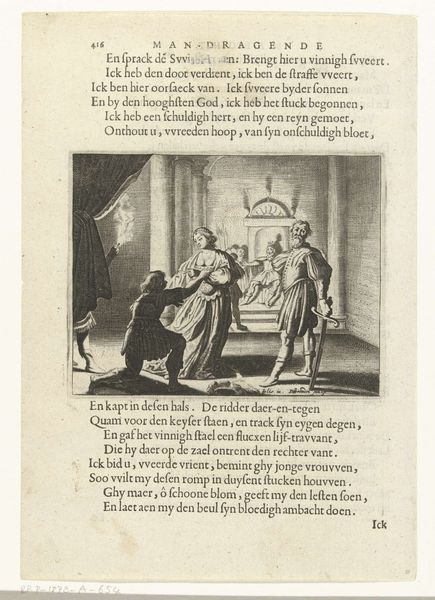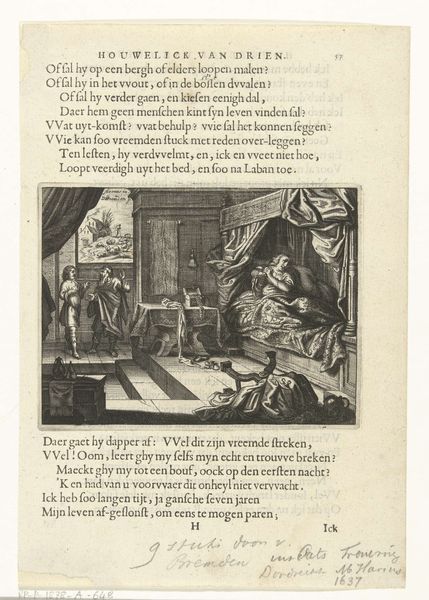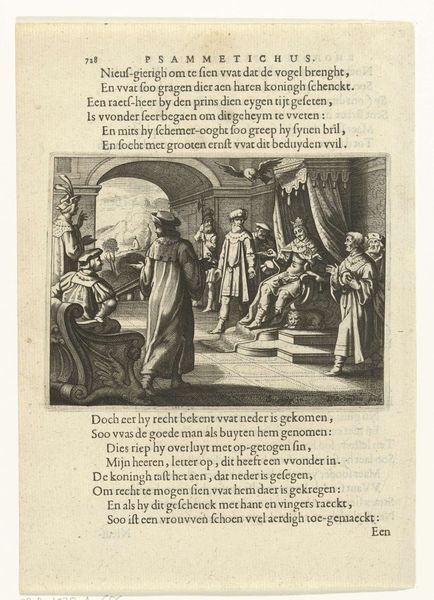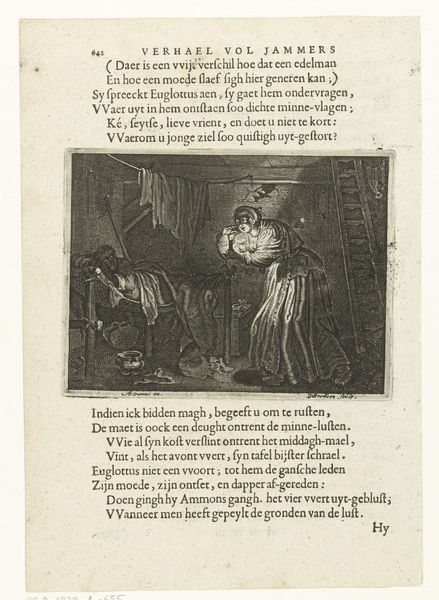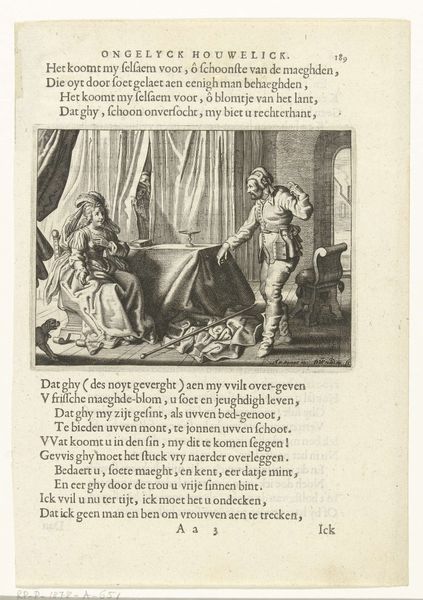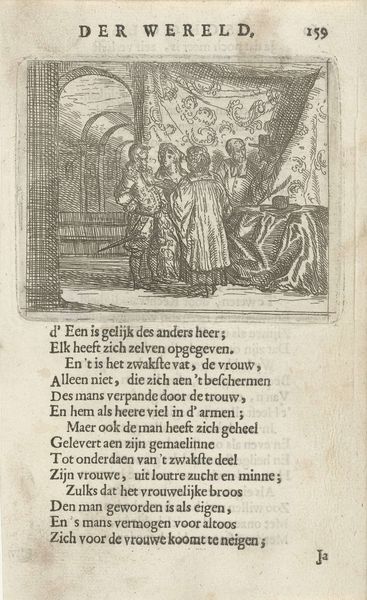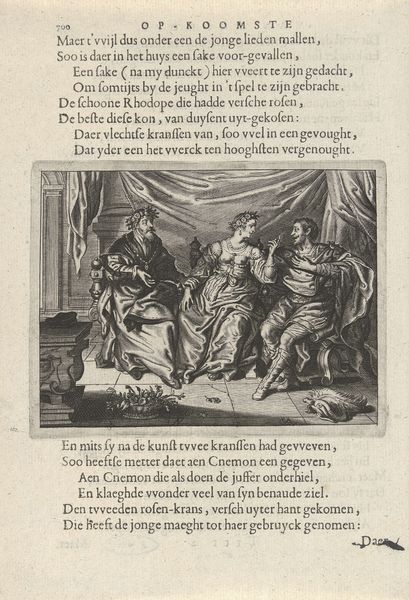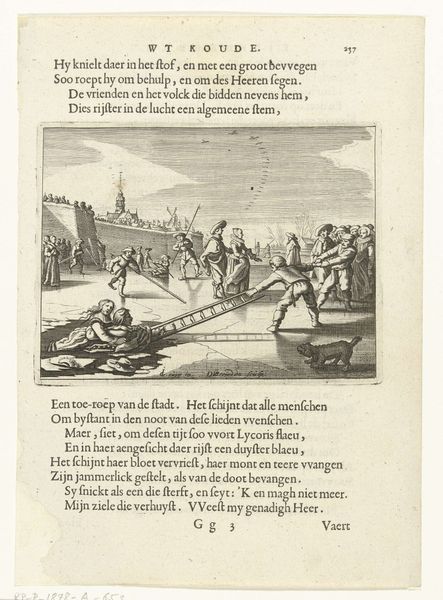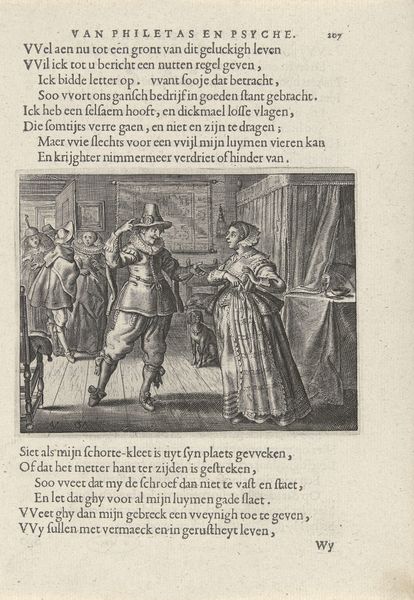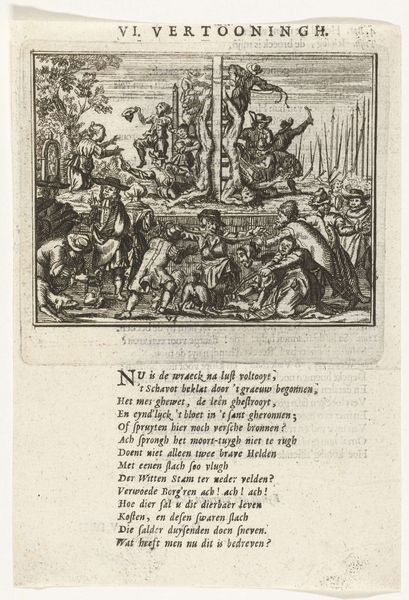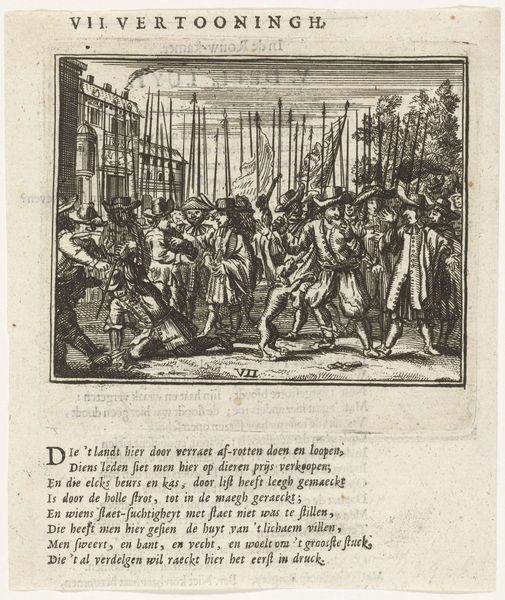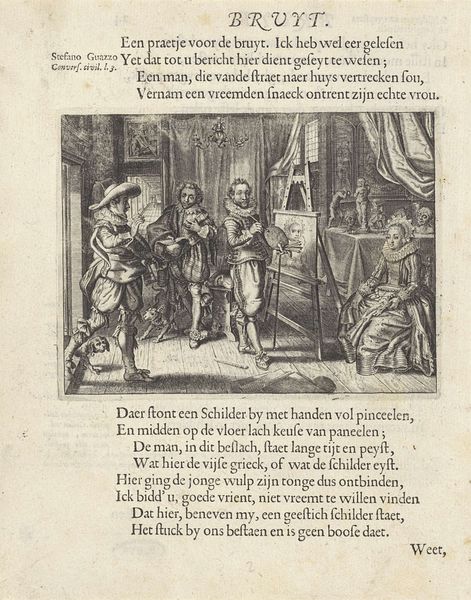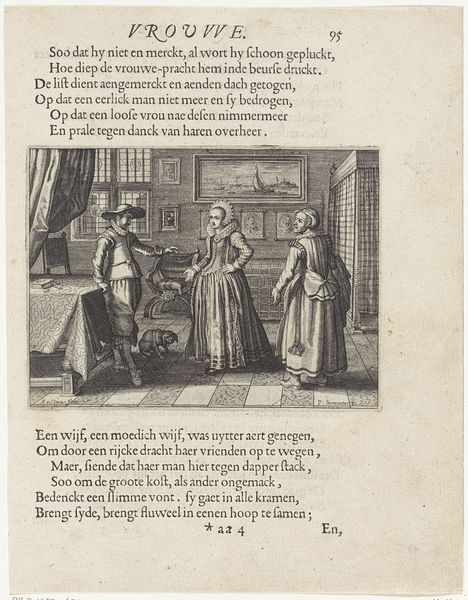
print, engraving
#
baroque
# print
#
history-painting
#
engraving
Dimensions: height 230 mm, width 165 mm, height 134 mm, width 105 mm
Copyright: Rijks Museum: Open Domain
Curator: It is my pleasure to introduce "Achsa en Otniël," an engraving dating back to approximately 1635 by Daniël van den Bremden. Currently, this piece resides within the prestigious collection of the Rijksmuseum. Editor: My immediate response is one of somber reflection, I see the sharp, decisive lines carving out a world of austere drama and what appears to be formalized respect. It's stark, monochromatic presentation only enhances the feeling of gravitas. Curator: Indeed. Bremden meticulously uses the medium of engraving to narrate a scene steeped in history. I'm referring here to history painting. The linear precision emphasizes forms, look at the figures' garments, each etched stroke articulates weight, volume, and intricate details, giving a textural, almost sculptural, presence to a primarily graphic rendering. Editor: The visual politics are quite striking, don't you think? The dynamic prostration of the figure foregrounds power. The entire scene is orchestrated, really. It directs our gaze strategically toward the female figure. There's a deliberate visual emphasis on how submission translates into potential ascendancy. This echoes period notions about feminine submission as source of strength in alliances. Curator: A brilliant reading! Note too, how van den Bremden manipulates light and shadow to generate emotional intensity. Look at how the fall of light accentuates gestures within this small arena. It adds significant value beyond simple depiction—more a psychological or moral statement conveyed using only monochrome. Editor: Definitely! One can’t help seeing this performance as a constructed one meant for audiences inside this pictorial world, but also very clearly pointed toward external societal and power discourses operating at the time it was created. A print like this likely functioned as political allegory as much as straight history documentation. Curator: Exactly. Focusing on these carefully interwoven layers, the graphic structure allows close examination and theoretical inquiry that opens dialogues related directly toward societal functions—art offering entry-points to question underlying societal constructs and visual conventions themselves. Editor: It's truly enriching to view how deeply this historical representation mirrors the politics of presentation, reinforcing visual constructs through careful craft. The work acts, thereby, less as history and more as political document actively engaged in social power struggles happening well beyond just surface image.
Comments
No comments
Be the first to comment and join the conversation on the ultimate creative platform.
